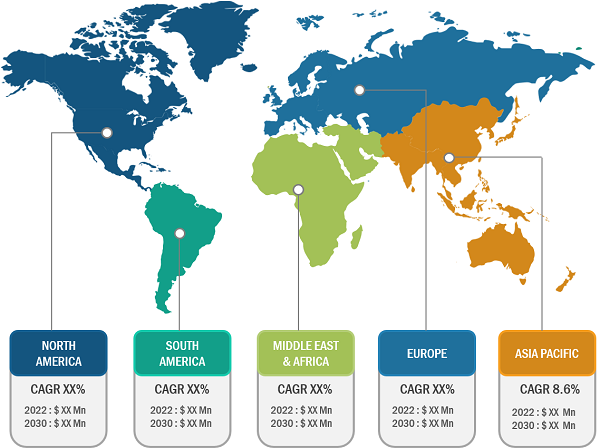Gelatin Capsules Segment Drives Empty Capsules Market Growth
According to our new research study named "Empty Capsules Market Forecast to 2031 – Global Analysis – by Product, Functionality, Application, End User, and Geography," the market was valued at US$ 7.79 billion in 2024 and is projected to reach US$ 13.68 billion by 2031; it is expected to register a CAGR of 8.5% during 2025–2031. The rising geriatric population, increased demand for empty capsules across industries, and growing preference for capsule-based medications are driving the adoption of empty capsules. The integration of smart and functional capsules is projected to bring new empty capsules market trends in the coming years.
Empty capsules are tasteless gelatin or non-gelatin type material shells that are used to enclose medicines, herbs, or supplements for easy consumption by mouth. The increased consumption of dietary supplements, surging pharmaceutical innovations, and the rising demand for consuming plant-based capsules are key factors driving the global empty capsules market growth. Aging populations and the rising prevalence of chronic diseases are contributing to the rising empty capsules market size.
Empty Capsules Market, by Region, 2024 (%)
Empty Capsules Market Size and Forecast (2021 - 2031), Global and Regional Share, Trend, and Growth Opportunity Analysis Report Coverage: By Product (Gelatin Capsules and Non-Gelatin Capsules), Functionality (Immediate-release Capsules, Delayed-release Capsules, and Sustained-release Capsules), Application (Antibiotic and Antibacterial Drugs, Vitamin and Dietary Supplements, Antacids and Anti-flatulent preparations, and Others), End User (Pharmaceutical Industry, Nutraceutical Industry, Cosmetics Industry, and Research Laboratories), and Geography
Empty Capsules Market Share & Demand Insights 2031
Download Free Sample
Source: The Insight Partners Analysis
Empty Capsules Market Analysis Based on Segmental Evaluation:
Based on product, the empty capsules market is bifurcated into gelatin capsules and non-gelatin capsules. The gelatin capsules segment held a significant empty capsules market share in 2024. Gelatin capsules originate from collagen, which is taken from the parts of animals such as the bones of cattle and the skin of pigs. Since they have an excellent bioavailability, are easy to swallow, and are cheap, they have been the industry standard for a long time. These capsules are widely preferred for solid and liquid formulations such as powders, pellets, oils, and herbal extracts. Their capability to give the drugs an agreeable taste and odor while ensuring accurate dosing makes them highly preferred for oral drug delivery. Gelatin capsules offer versatile usage, with size options ranging from 000 for high-dose formulations to size 5 for pediatric applications. Their color can be customized for branding and improved patient compliance. In the pharmaceutical sector, Lonza uses the oxygen barrier component of a porcine-derived hard gelatin capsule for antibiotic drugs such as amoxicillin formulations. By implementing this process, the shell will prevent degradation, ensuring stability during storage and quick release in the gastrointestinal tract. The expansion of the gelatin capsules segment is attributed to their simple swallowing, quick drug release, extensive pharmaceutical application, cheapness, and rising consumption of health supplements and personalized medicine.
The geographical scope of the empty capsules market report encompasses an assessment of the market performance in North America, Europe, the Asia Pacific, South America, Central America, the Middle East, and Africa. North America dominated the empty capsules market share in 2024. The foremost growth factor is the escalating demand for dietary supplements and nutraceuticals due to growing health awareness and an increasing number of elderly people who are seeking preventive healthcare solutions. The prevalence of chronic diseases such as cardiovascular disorders, arthritis, and diabetes has led to the situation where people are consuming more and more capsule-based medications, which are easy to swallow and quickly absorbed. The pharmaceutical industry's influential position in North America, along with advanced R&D capabilities, is a great support for the creation of innovative capsule delivery systems, such as sustained-release and targeted drug delivery. The increasing demand for gelatin and non-gelatin capsules, especially plant-based ones, is in harmony with the region's transition to clean-label and vegetarian products. The regulatory support and high healthcare expenditure provide quality standards and easy access to advanced manufacturing facilities, thus boosting the empty capsules market growth. Pharmaceutical companies use contract manufacturing organizations (CMOs) to reduce costs and improve efficiency by outsourcing capsule production. Hence, the empty capsules market growth in North America is driven by demographic trends, lifestyle-related health issues, innovation, and a supportive regulatory and industrial environment. Therefore, the above-mentioned factors support the growth of the global empty capsules market.
Lonza Group, ACG Worldwide, Qualicaps Co. Ltd, Suheung Co. Ltd., CapsCanada Inc., HealthCaps India Private Limited, Natural Capsules Limited, Operio Group, UCB, and Roxlor LLC. are among the leading companies profiled in the empty capsules market report.
Based on product, the empty capsules market is bifurcated into gelatin capsules and non-gelatin capsules. By functionality, the market is segmented into immediate-release capsules, delayed-release capsules, and sustained-release capsules. On the basis of application, the empty capsules market is classified into antibiotic and antibacterial drugs, vitamin and dietary supplements, antacids and anti-flatulent preparations, and others. Per end user, the market is categorized into the pharmaceutical industry, the nutraceutical industry, the cosmetics industry, and research laboratories. Geographically, the empty capsules market is segmented into North America (US, Canada, and Mexico), Europe (France, Germany, UK, Spain, Italy, and the Rest of Europe), Asia Pacific (China, Japan, India, South Korea, Australia, and the Rest of Asia Pacific), the Middle East and Africa (Saudi Arabia, South Africa, the UAE, and the Rest of the Middle East and Africa), and South and Central America (Brazil, Argentina, and the Rest of South and Central America).
Contact Us
Phone: +1-646-491-9876
Email Id: sales@theinsightpartners.com